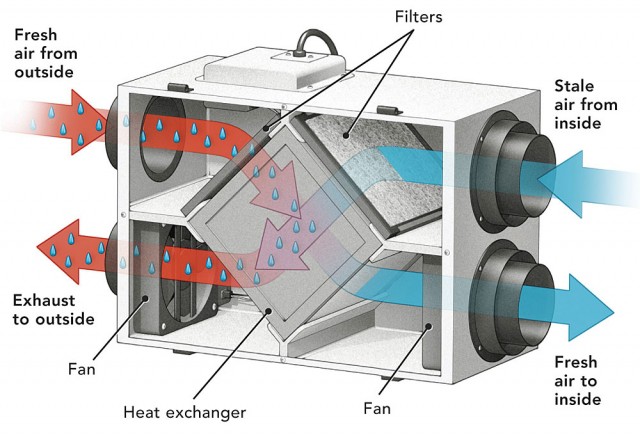Discovering the Benefits of Heat Recovery Ventilation for Energy Performance in Residences
Heat Recovery Ventilation (HRV) systems use homeowners a functional method to enhancing energy efficiency. By redeeming warmth from outbound air, these systems can significantly minimize heating & cooling costs. Furthermore, they offer a steady supply of fresh air, enhancing indoor air top quality and comfort degrees. As home owners consider lasting choices, understanding the nuances of HRV systems ends up being significantly crucial. What factors should one assess before making such an investment?
Comprehending Heat Recovery Ventilation Systems

Exactly How HRV Enhances Indoor Air Top Quality

Energy Savings: The Economic Benefits of HRV
Making best use of power efficiency, heat recovery ventilation (HRV) systems use significant financial advantages for house owners. By recouping and reusing heat from exhaust air, HRVs noticeably decrease heating & cooling expenses. This modern technology can result in energy financial savings of as much as 30%, depending on climate and use patterns. House owners frequently observe minimized utility bills shortly after installation, making HRVs a monetarily smart financial investment over time. Furthermore, several regions offer rewards or rebates for energy-efficient upgrades, even more enhancing the monetary allure. As power prices remain to climb, the cost-effectiveness of HRVs ends up being significantly clear. In general, the incorporation of HRV systems not just promotes power effectiveness but also contributes to lasting monetary cost savings for families.
The Environmental Influence of Heat Recovery Ventilation
A significant ecological advantage of heat recovery ventilation (HRV) systems exists in their capacity to lower general power intake. By reclaiming warm from exhaust air and moving it to inbound fresh air, HRV systems reduce the demand for energy-intensive heating and cooling techniques. This decrease in energy need adds to decrease greenhouse gas emissions, as much less nonrenewable fuel source is required to this content keep comfy interior temperature levels. In addition, HRV systems boost interior air high quality by effectively exchanging stagnant air with fresh exterior air, lowering dependence on mechanical air conditioning systems that can hurt the environment. Overall, the implementation of HRV systems supports lasting living methods and straightens with international initiatives to battle environment modification by advertising power effectiveness in household settings.
Choosing the Right HRV System for Your Home
Just how can homeowners guarantee they select the best heat recovery ventilation (HRV) system for their demands? They must examine their home's size and design, as these elements influence air movement requirements. Next, reviewing the system's effectiveness ratings is important, as higher ratings indicate much better performance and energy savings. Home owners must additionally think about setup and upkeep costs, comparing various brand names and models for worth. Furthermore, it is essential to evaluate noise degrees, as some systems operate even more quietly than others. Consulting with HVAC professionals can supply customized referrals based on specific home problems. Ultimately, taking a look at individual reviews and service warranties can help redirected here in making an informed decision, making certain that the selected HRV system successfully enhances interior air quality and power performance.
Frequently Asked Concerns

Just how Typically Should I Clean or Keep My HRV System?
The regularity of cleansing or preserving a heat healing air flow (HRV) system commonly depends on usage and environmental factors. Usually, it is suggested to do maintenance every six months to ensure peak efficiency and air quality.

Can HRV Equipments Help Minimize Moisture Degrees Indoors?
HRV systems can efficiently minimize interior moisture levels by exchanging stale, humid air with fresh, drier air from outside. HRV Heat Recovery Ventilation. This process helps maintain a balanced indoor atmosphere, enhancing comfort and stopping moisture-related problems
What Is the Lifespan of a Normal HRV System?
The lifespan of a common heat recovery ventilation (HRV) system varies, normally lasting in between 10 to 15 years. Normal maintenance can extend its performance and functional life, guaranteeing peak efficiency throughout its usage period.
Are There Any Type Of Sound Interest In HRV Systems?
Sound worry about HRV systems can occur, particularly from fan procedure. Several modern-day devices are made to decrease sound levels, guaranteeing they run quietly while preserving efficiency, which deals with possible disruptions in living atmospheres.
Can I Install an HRV System Myself, or Do I Need a Professional?
The individual contemplated whether to set up the heat recovery ventilation (HRV) system personally or work with an expert. Usually, read the full info here while do it yourself installation is feasible, knowledge assurances appropriate performance and conformity with local building codes, boosting system effectiveness.